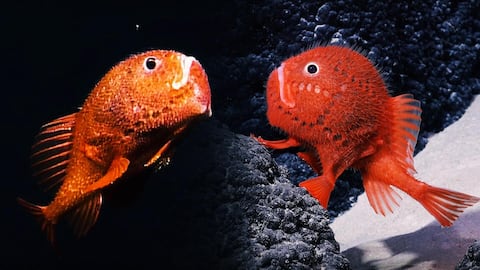'Walking' fish discovered in offshore Chile
What's the story
In early 2024, scientists embarked on an expedition aboard the Falkor research vessel from the Schmidt Ocean Institute, venturing into the depths of the southeastern Pacific Ocean. Using a ROV equipped with lights and cameras, they explored over 5,000 feet below the surface, live-streaming the hidden wonders of the ocean. Researchers found a living constellation of life forms, with many organisms flashing with bioluminescence.
Walking fish
Crocheted skin
Among the notable discoveries is a species of "walking" fish, characterized by big eyes and skin resembling crochet. The creature looks like a sea toad, a type of deep-sea anglerfish known for its gloomy expressions and glowing appearance used to attract prey. Its skin feels like a crochet and has tiny needles, probably for protection and sensing things around it.
Evolution of walking fish
Uncommon trait
Walking has independently emerged multiple times in fish, illustrating an instance of evolutionary convergence, similar to the development of similar traits such as wings in bats and birds. However, the evolution of walking in fish is uncommon. Of the over 30,000 known fish species, only a small number possess the ability to "walk," exhibiting this remarkable ability to navigate terrestrial environments.
Another example
Little skate
The little skate, a cartilaginous fish similar to rays and sharks, navigates underwater by "walking" on its fins, resembling land-based animals. Unlike sarcopterygians, which played a significant role in the evolution of terrestrial vertebrates, it interests scientists studying locomotion evolution to independently evolve this behavior. However, understanding the genetic underpinnings of this walk has been hindered by limited data quality so far.
Marine Oasis
Seamounts
Scientists have also discovered four previously undiscovered underwater mountains, known as seamounts, constituting a kind of oasis in the middle of ocean. The distinctive topography of these seamounts fosters the existence and adaptation of specific species found solely on each mountain. Consequently, the majority of species inhabiting this mountain range and its seamounts are exclusive and cannot be found elsewhere in the world.
